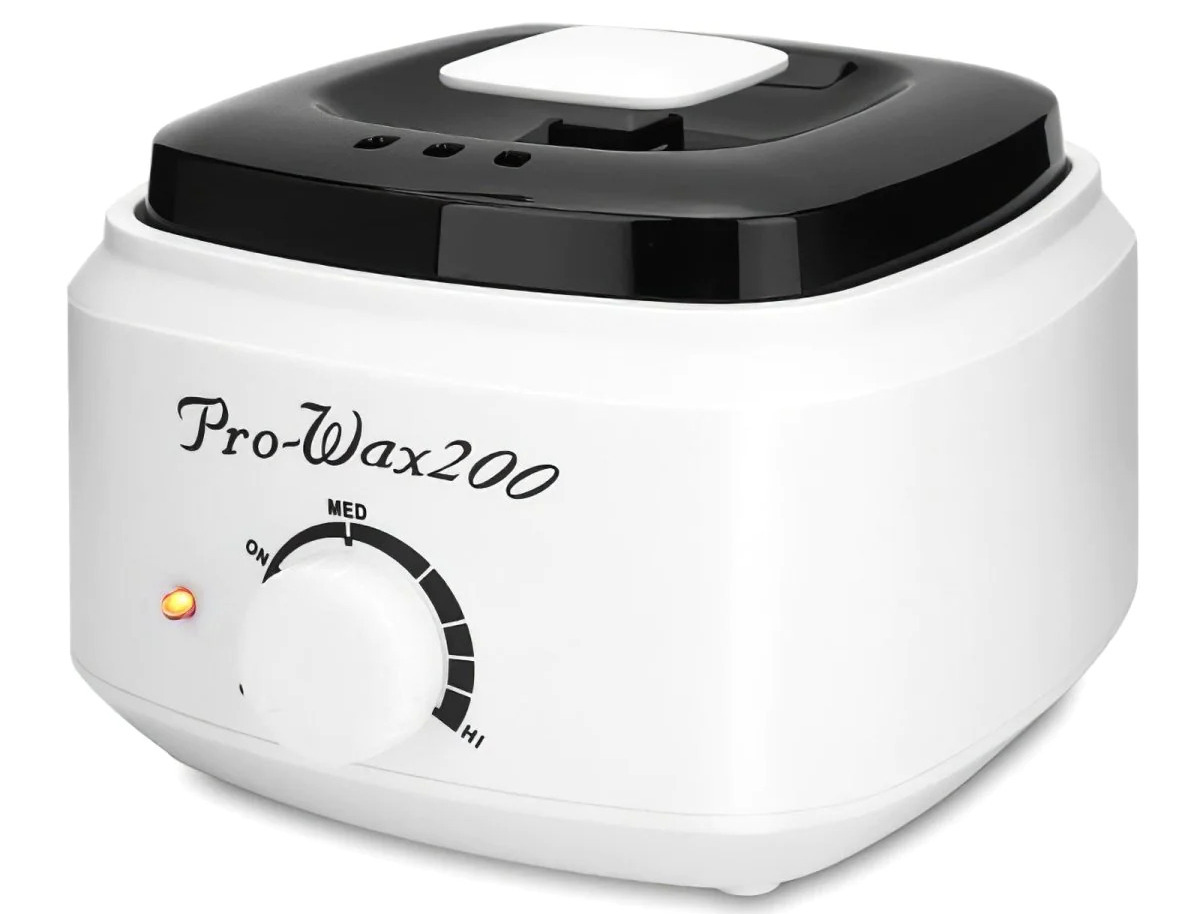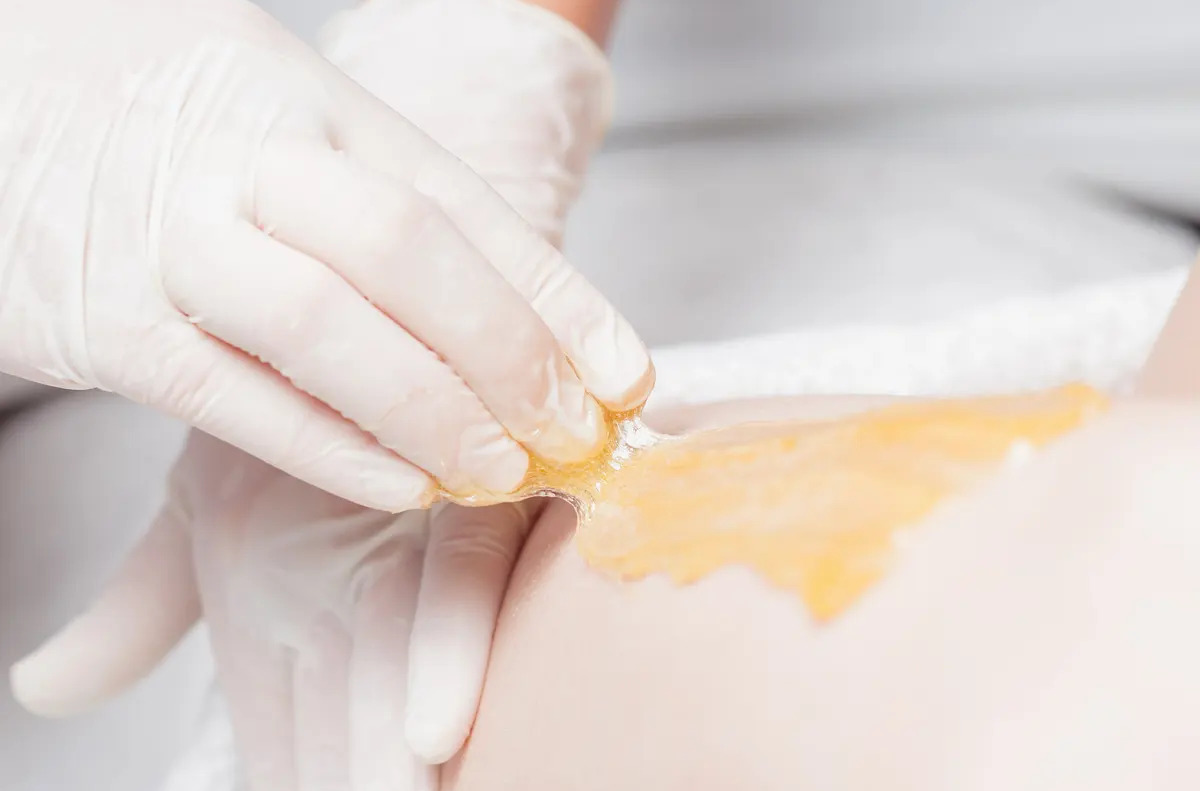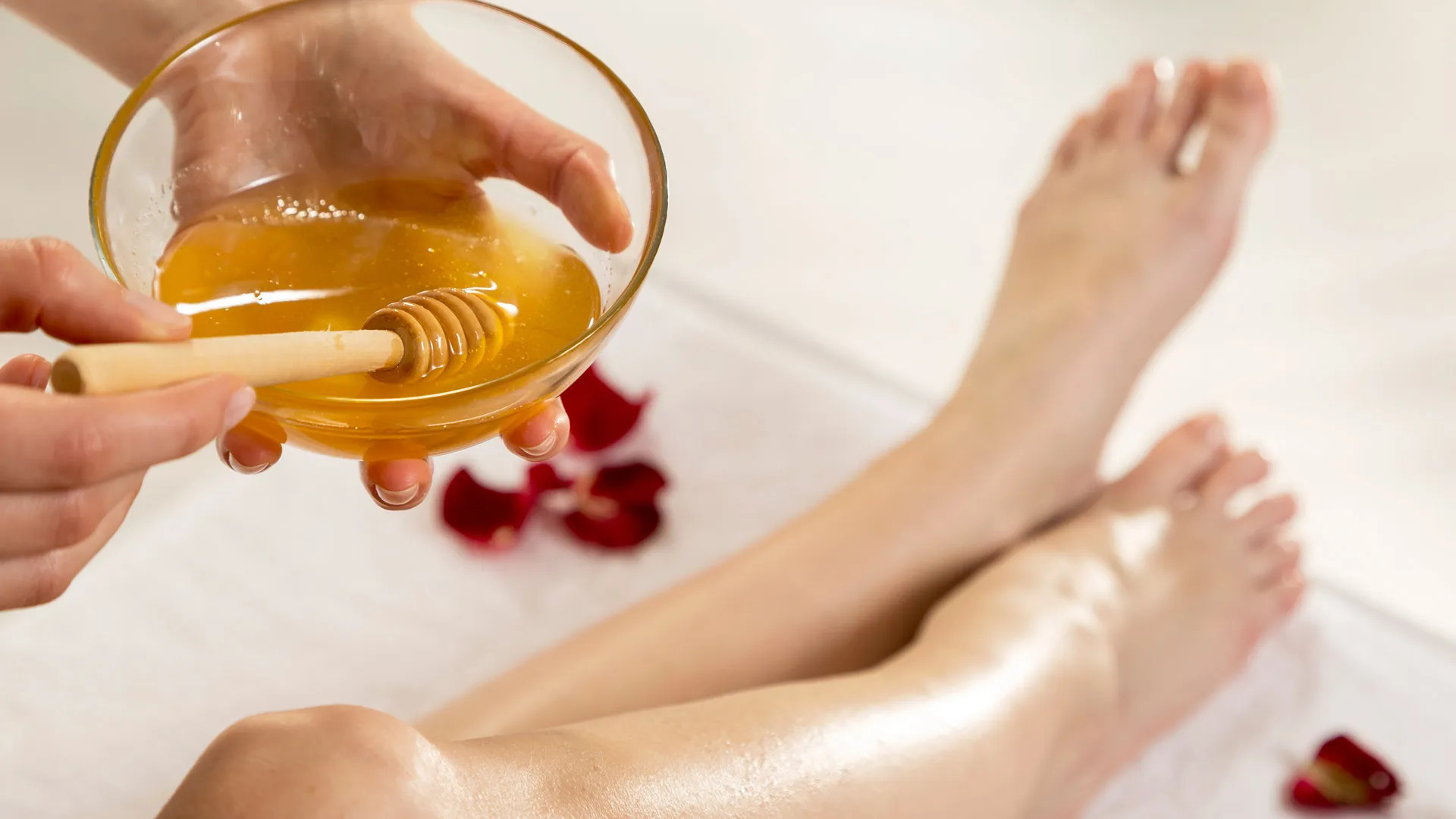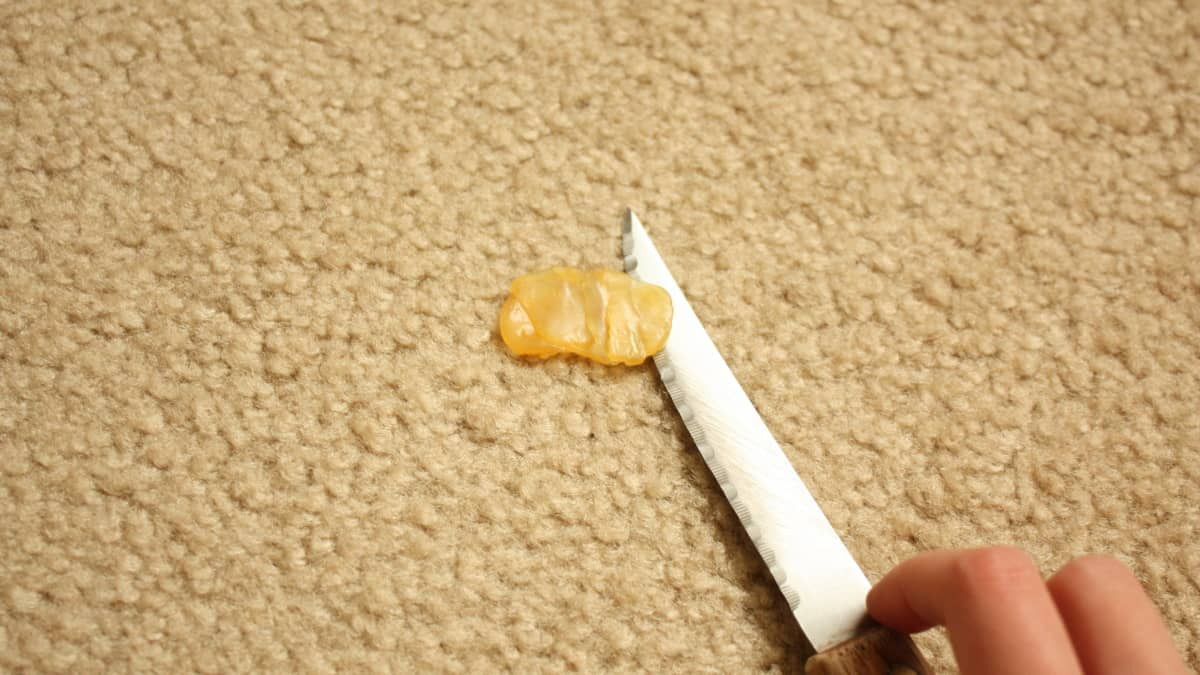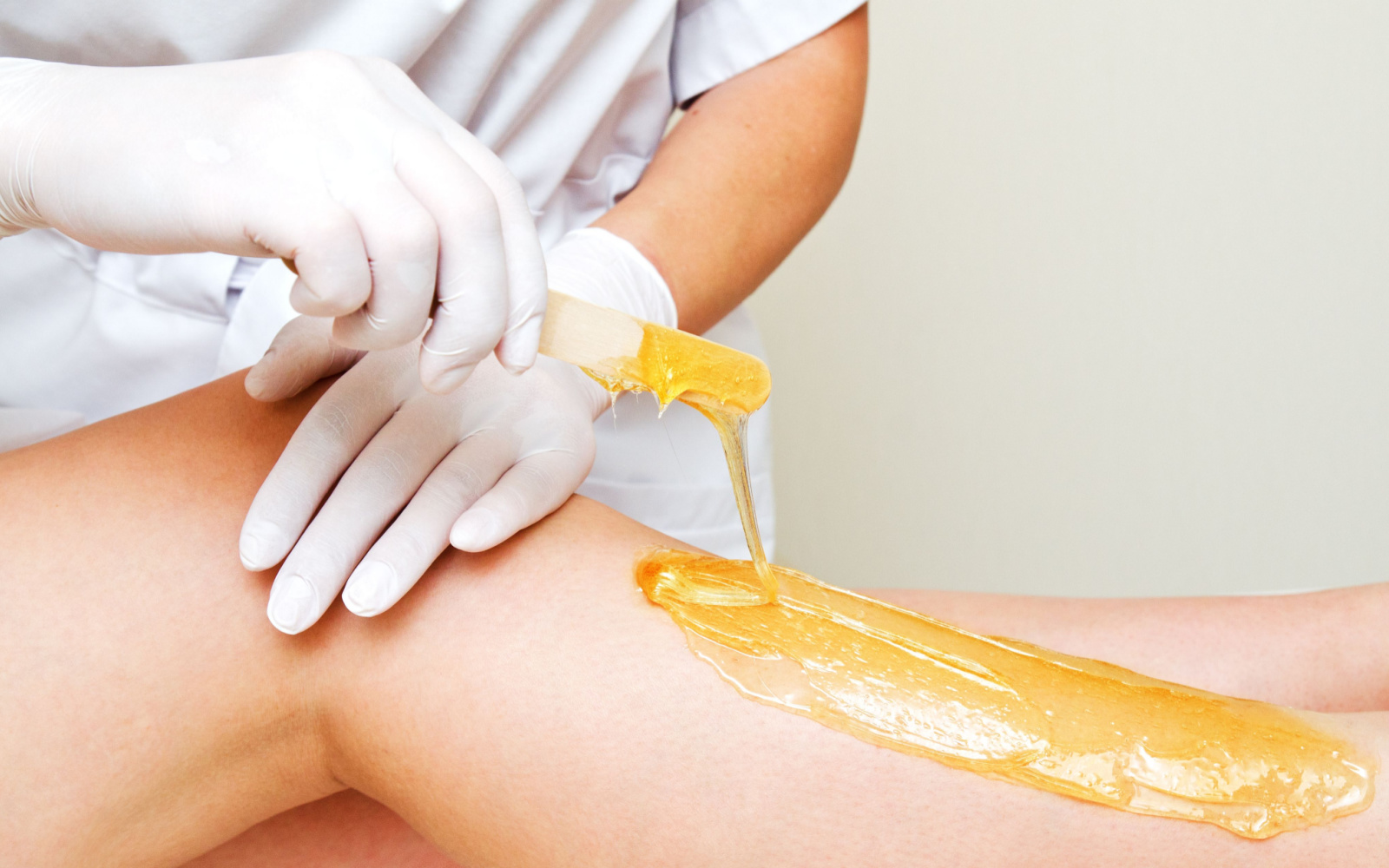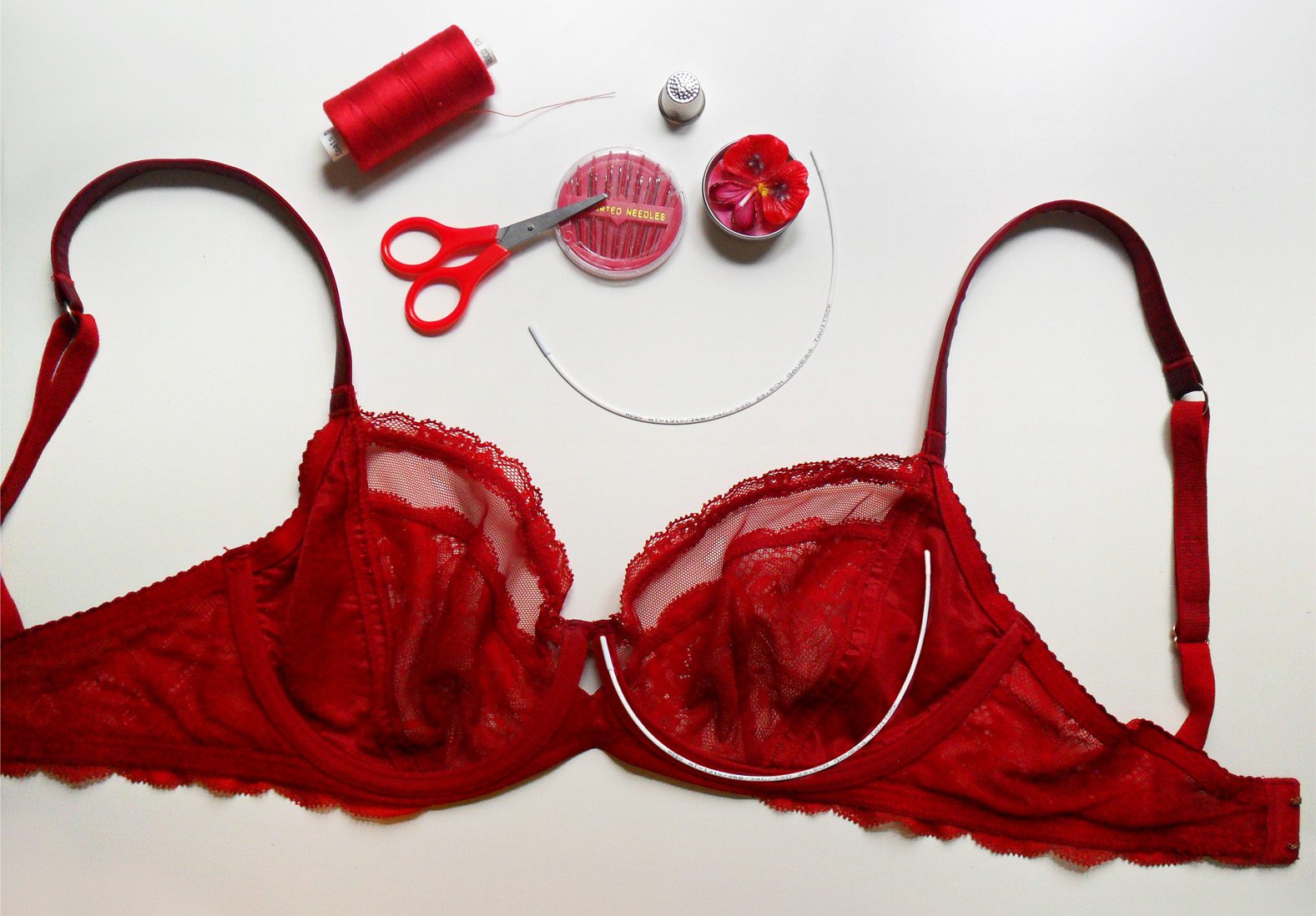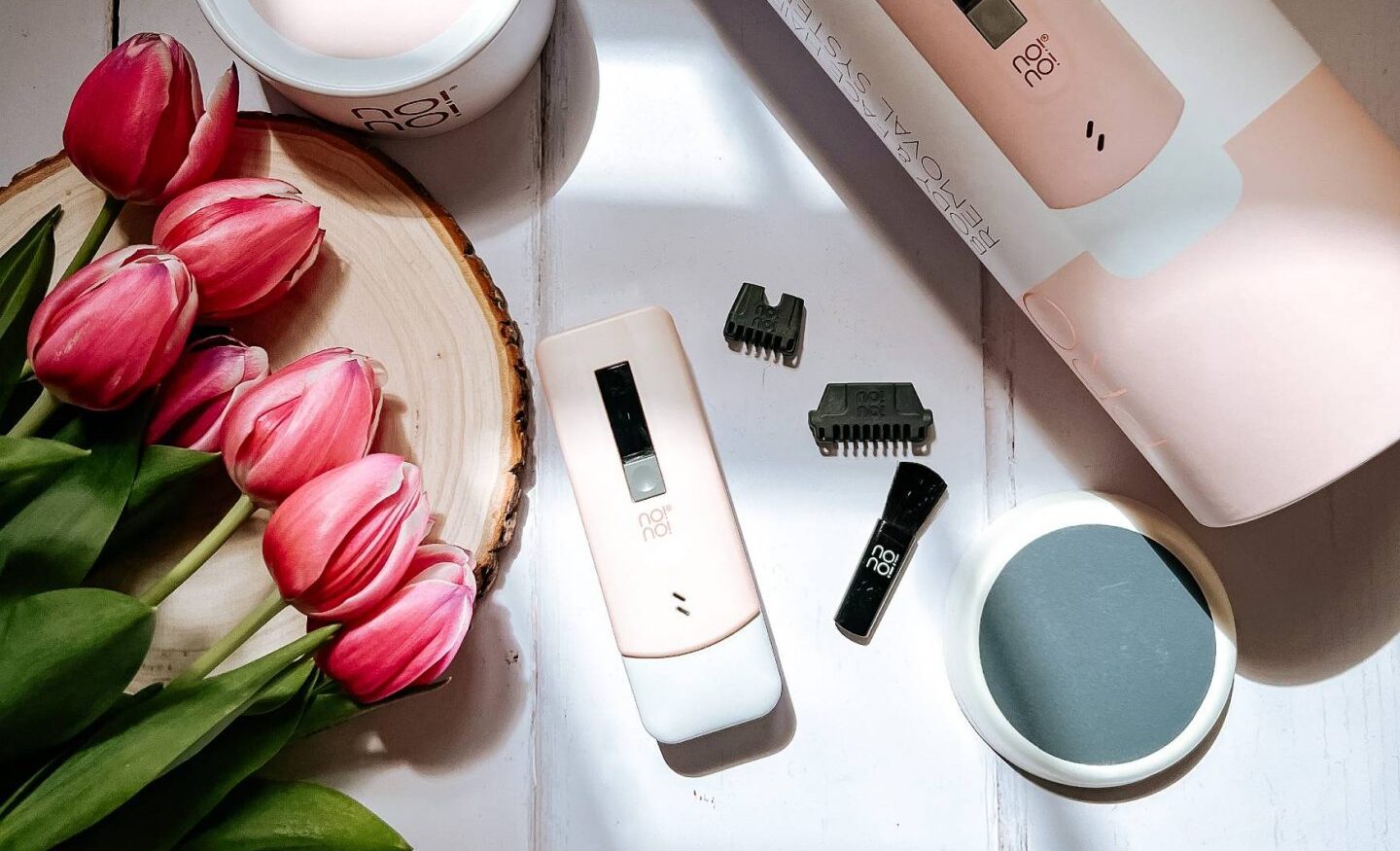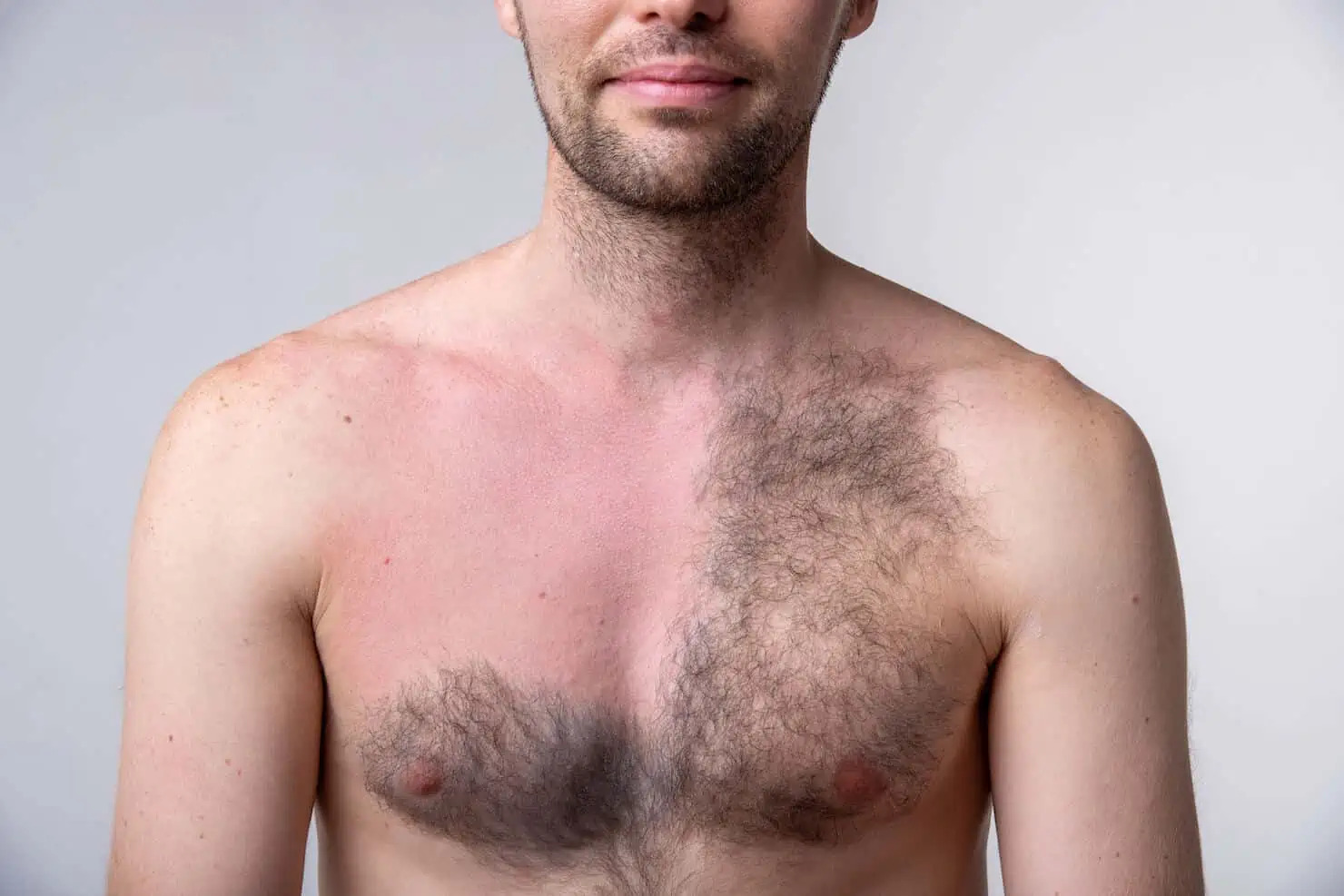Home>How-to Guides>For Women>How To Remove Hair Removal Wax From Skin
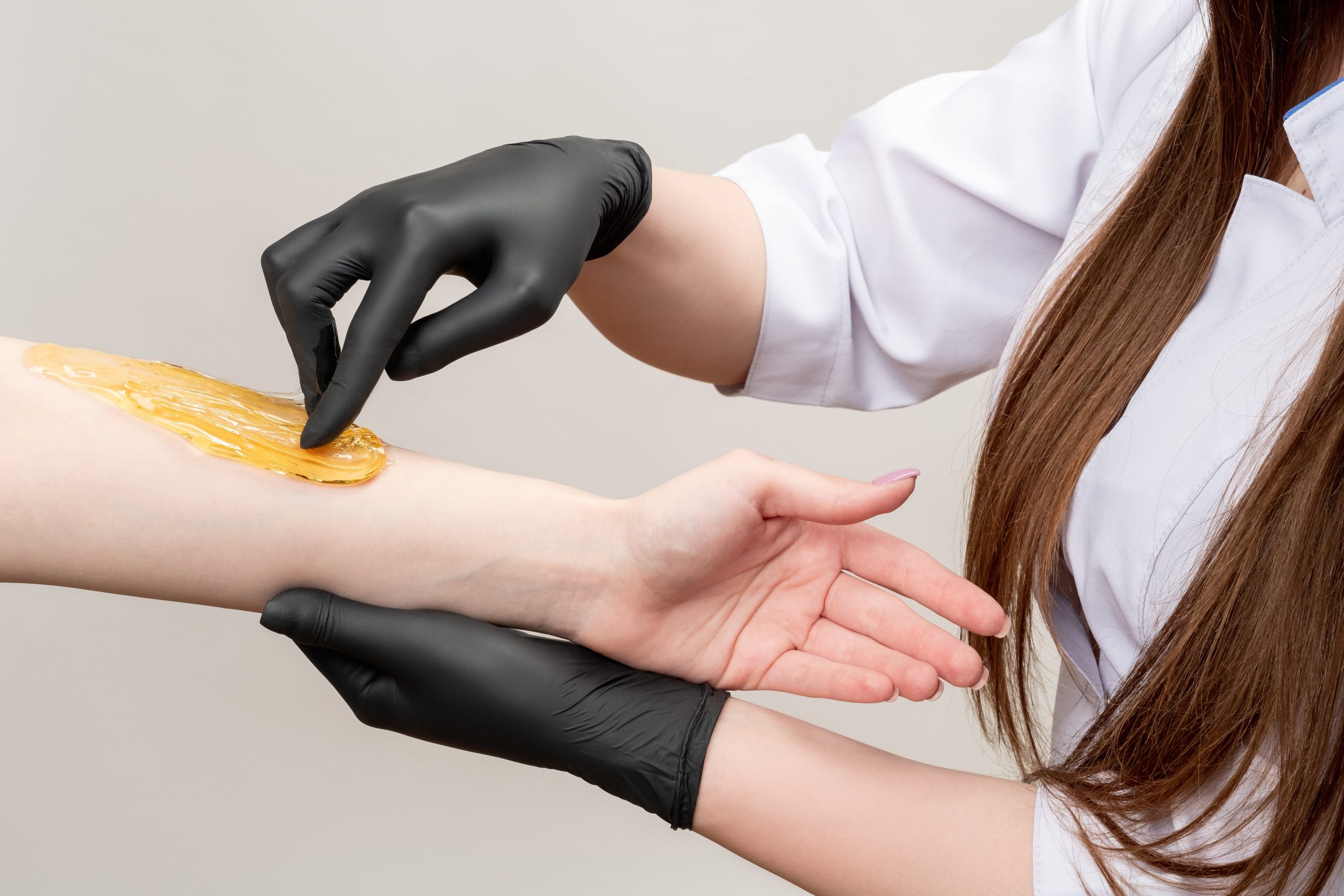

For Women
How To Remove Hair Removal Wax From Skin
Modified: August 5, 2023
Discover effective methods to remove hair removal wax from the skin. Perfect for women seeking smooth and hair-free results.
(Many of the links in this article redirect to a specific reviewed product. Your purchase of these products through affiliate links helps to generate commission for Under-tec.com, at no extra cost. Learn more)
Table of Contents
- Introduction
- Why Hair Removal Wax Can Be Difficult to Remove
- Precautions Before Removing Hair Removal Wax
- Methods to Remove Hair Removal Wax from Skin
- Method 1: Using Oil
- Method 2: Using Warm Water and Soap
- Method 3: Using a Wax Remover
- Method 4: Using Ice
- Method 5: Using an Exfoliating Scrub
- Method 6: Using Lemon Juice
- Tips and Precautions While Removing Hair Removal Wax
- Conclusion
Introduction
Removing hair using wax is a popular method among women for achieving smooth and hair-free skin. However, one common challenge that many women face is how to properly remove the wax residue from their skin after the hair removal process. Hair removal wax can be stubborn and cling to the skin, making it difficult to remove. Without proper removal, the residual wax can cause discomfort and even skin irritation.
In this article, we will explore various methods to effectively remove hair removal wax from the skin. These methods are easy to follow and can be done using common household items. Whether you are a beginner or have been using hair removal wax for years, these techniques will help you achieve a clean and wax-free finish.
Before diving into the methods, it is important to note that each person’s skin is unique, and results may vary. It is always recommended to perform a patch test on a small area of skin before using any of the methods on a larger surface area. This will help you determine if your skin has any adverse reactions or allergies to the products or ingredients.
Now, let’s explore the different methods to remove hair removal wax from the skin, giving you smooth and wax-free results.
Why Hair Removal Wax Can Be Difficult to Remove
Hair removal wax is designed to adhere to the hair and pull it out from the root, leaving your skin hair-free. However, this strong adherence also makes it challenging to remove the wax residue from the skin. There are several reasons why hair removal wax can be difficult to remove:
- Stickiness: Hair removal wax has a sticky texture that helps it grip onto the hair. This stickiness also causes it to cling to the skin, making it hard to remove.
- Cooling and hardening: After application, hair removal wax cools down and hardens, creating a solid layer on the skin. This hardened wax can be tough to remove without proper techniques.
- Residue left behind: Even after removing the majority of the wax, there might still be small amounts of residue left on the skin. This residue can be sticky and stubborn to get rid of.
- Temperature sensitivity: Different types of hair removal wax have different temperature requirements for optimal results. If the wax is not heated or cooled correctly, it may not adhere properly to the hair or skin, making it harder to remove.
- Improper application: Incorrect application techniques, such as applying too much wax or not spreading it evenly, can lead to uneven wax removal and leave behind patches of residue on the skin.
Understanding why hair removal wax can be difficult to remove is crucial in finding effective methods to remove it. By utilizing the right techniques and products, you can overcome these challenges and achieve smooth and wax-free skin.
Precautions Before Removing Hair Removal Wax
Before jumping into the process of removing hair removal wax from your skin, there are a few precautions you should keep in mind to ensure a safe and effective removal:
- Cool down the wax: Allow the hair removal wax to cool down completely before attempting to remove it. This will prevent any accidental burns or discomfort.
- Avoid using sharp objects: Never use sharp objects, such as knives or scissors, to scrape off the wax. This can cause injury to your skin and lead to infections.
- Choose the right method: Select a removal method that suits your skin type and preferences. Some methods may be more suitable for sensitive skin, while others may require certain products or ingredients that you may not prefer.
- Do a patch test: Before using any new products or methods on a larger area, perform a patch test on a small, inconspicuous area of skin. This will help you determine if you have any allergies or adverse reactions to the products or ingredients being used.
- Be gentle: When removing the wax, be gentle with your skin to prevent any irritation or damage. Avoid excessive scrubbing or rubbing, as this can cause redness or inflammation.
- Moisturize after removal: After removing the wax, moisturize your skin to replenish any lost moisture and soothe the treated area. Use a gentle moisturizer that is suitable for your skin type.
- Consult a professional: If you are unsure about removing the hair removal wax yourself or have any concerns, it is advisable to consult a professional esthetician or dermatologist. They can provide guidance and assistance tailored to your specific needs.
By taking these precautions before removing the hair removal wax, you can ensure a safe and successful wax removal experience, leaving your skin smooth and free from any unwanted residue.
Methods to Remove Hair Removal Wax from Skin
There are several effective methods to remove hair removal wax from the skin. These methods use common household items and are easy to follow. Here are some popular techniques:
- Using Oil: Apply a generous amount of baby oil, coconut oil, or olive oil to the waxed area. Massage the oil into the skin to loosen the wax. Then, use a clean cloth or cotton pad to gently wipe away the wax residue.
- Using Warm Water and Soap: Soak a washcloth in warm water and wring out the excess. Place the warm washcloth over the waxed area for a few minutes to soften the wax. Then, use a gentle soap or body wash to lather the area and gently scrub in circular motions to remove the wax.
- Using a Wax Remover: Wax removers are specifically designed to dissolve and remove wax residue. Apply a small amount of wax remover to a cotton pad or cloth and gently rub it on the waxed area. Follow the manufacturer’s instructions for best results.
- Using Ice: Apply an ice pack or ice cubes wrapped in a clean cloth to the waxed area for a few minutes. The cold temperature will harden the wax, making it easier to scrape off with a dull knife or your fingernail. Be careful not to apply too much pressure to avoid skin irritation.
- Using an Exfoliating Scrub: Mix sugar or salt with olive oil or coconut oil to create an exfoliating scrub. Gently massage the scrub onto the waxed area in circular motions. This will help remove the wax residue while also exfoliating the skin.
- Using Lemon Juice: Dip a cotton ball in fresh lemon juice and gently rub it over the waxed area. The acidity of the lemon juice will help dissolve the wax. Afterward, rinse the area with warm water and pat dry.
These methods will effectively remove the hair removal wax from your skin, leaving you with a smooth and clean finish. Choose the method that works best for you based on availability of ingredients and your personal preferences.
Method 1: Using Oil
One popular and effective way to remove hair removal wax from the skin is by using oil. Oil helps to break down the wax and make it easier to wipe away. Here’s how to use this method:
- Choose an oil: Select an oil of your choice, such as baby oil, coconut oil, or olive oil. These oils have moisturizing properties and work well to dissolve the wax.
- Apply oil to the waxed area: Liberally apply the oil to the waxed area. Ensure that the entire area is covered with a generous amount of oil.
- Massage the oil into the skin: Gently massage the oil into the skin using circular motions. This helps to break down the wax and loosen its grip on the skin.
- Wipe away the wax: Take a clean cloth or cotton pad and gently wipe away the wax residue. Repeat this process until all the wax is removed. You may need to use multiple cloths or pads if there is a significant amount of wax.
- Cleanse the skin: After removing the wax, cleanse the skin with a mild soap or body wash to remove any remaining oil and residue.
- Moisturize: Lastly, moisturize the waxed area with a gentle moisturizer to soothe the skin and restore moisture.
This method is effective as the oil helps to dissolve the wax, making it easier to wipe away. Make sure to be gentle while massaging and wiping, as excessive pressure or rubbing can irritate the skin.
Using oil to remove hair removal wax is a simple and affordable method that can be performed at home. It not only helps in wax removal but also moisturizes the skin, leaving it soft and nourished.
Method 2: Using Warm Water and Soap
Another effective and easily accessible method to remove hair removal wax from the skin is by using warm water and soap. This method helps to soften the wax, making it easier to wash away. Here’s how to use this method:
- Prepare warm water: Fill a basin or bowl with warm water. Make sure the water is comfortably warm but not too hot to avoid burning your skin.
- Soak a washcloth: Take a clean washcloth and soak it in the warm water. Wring out the excess water, leaving the washcloth damp.
- Place the washcloth on the waxed area: Gently place the warm washcloth on the waxed area, making sure it covers the entire affected area. Leave it on for a few minutes, allowing the warmth to soften the wax.
- Lather soap: While the washcloth is on the skin, lather a gentle soap or body wash in your hands or on a separate washcloth.
- Gently scrub the waxed area: After a few minutes, remove the warm washcloth and use the soaped washcloth or your hands to gently scrub the waxed area in circular motions. The soap helps to break down the wax and lift it away from the skin.
- Rinse and pat dry: Rinse the area with warm water to remove any soap residue. Pat the skin dry with a clean towel.
This method effectively loosens the wax and allows for easy removal. The warmth of the water helps to soften the wax, making it less sticky, while the soap aids in breaking down the wax and cleansing the skin.
Using warm water and soap is a simple and readily available method that can be done at home. It is suitable for all skin types and provides a gentle way to remove hair removal wax from the skin.
Method 3: Using a Wax Remover
For those who prefer a specialized product to remove hair removal wax from the skin, using a wax remover is a convenient and effective option. Wax removers are specifically designed to dissolve and remove wax residue, leaving your skin clean and smooth. Here’s how to use this method:
- Select a wax remover: Choose a wax remover that is suitable for your skin type and preferences. There are various options available, including wax remover lotions, gels, or sprays. Read the product label and follow the instructions provided.
- Apply the wax remover: Take a small amount of the wax remover on a cotton pad or cloth. Gently rub the wax remover onto the waxed area, making sure to cover all the residue.
- Massage the area: Using circular motions, massage the wax remover into the skin. This will help to break down the wax and allow it to dissolve.
- Leave it on: After massaging, let the wax remover sit on the skin for the recommended amount of time specified by the product instructions. This allows the remover to fully dissolve the wax residue.
- Wipe away the wax: Take a clean cloth or cotton pad and gently wipe away the wax residue. You may need to repeat this step until all the wax is removed.
- Cleanse and moisturize: Once the wax is removed, cleanse the skin with a mild soap or body wash to remove any remaining residue. Finally, apply a gentle moisturizer to soothe and hydrate the skin.
Wax removers are specifically formulated to dissolve wax and are effective in removing even stubborn residue. They are convenient to use and provide targeted action for complete wax removal.
Remember to follow the instructions provided by the wax remover product and perform a patch test before using it on a larger area of skin to ensure compatibility and avoid any potential allergic reactions.
Method 4: Using Ice
Using ice is a simple and effective method for removing hair removal wax from the skin. The cold temperature helps to harden the wax, making it easier to scrape off. Here’s how to use this method:
- Prepare ice: Take an ice pack or wrap a few ice cubes in a clean cloth.
- Apply ice to the waxed area: Gently place the ice pack or wrapped ice cubes on the waxed area. Keep them in place for a few minutes. The cold temperature will cause the wax to harden.
- Scrape off the hardened wax: After a few minutes, remove the ice and use a dull knife or your fingernail to delicately scrape off the hardened wax. Be careful not to apply too much pressure to avoid skin irritation.
- Cleanse the skin: After removing the wax, cleanse the skin with a mild soap or body wash to remove any remaining residue.
- Moisturize: Afterward, moisturize the waxed area with a gentle moisturizer to soothe the skin and restore moisture.
This method is quick and effective in removing wax residue from the skin. The cold temperature causes the wax to solidify, allowing you to safely scrape it off without causing harm to your skin.
While using ice is generally safe, it is important to be cautious and gentle while scraping off the wax. If you experience any discomfort, stop the process and try a different method.
Using ice to remove hair removal wax is a cost-effective and easily accessible method that can be done at home. It provides a simple solution for removing the wax residue and leaving your skin clean and smooth.
Method 5: Using an Exfoliating Scrub
Using an exfoliating scrub is an effective method to remove hair removal wax from the skin while also providing gentle exfoliation. The scrub helps to break down the wax residue and slough off dead skin cells, leaving your skin fresh and smooth. Here’s how to use this method:
- Create an exfoliating scrub: Mix sugar or salt with olive oil or coconut oil to create an exfoliating scrub. The grainy texture of the sugar or salt helps to scrub away the wax residue, while the oil provides moisture to the skin.
- Apply the scrub: Take a small amount of the exfoliating scrub and gently massage it onto the waxed area in a circular motion. Make sure to cover the entire affected area with the scrub.
- Scrub gently: Use gentle pressure while scrubbing to avoid irritating the skin. Focus on areas with wax residue, massaging the scrub into the skin to break down the wax.
- Rinse off: After scrubbing, rinse the area with warm water to remove the scrub and wax residue. Pat the skin dry with a clean towel.
- Moisturize: Finally, apply a gentle moisturizer to soothe the skin and replenish moisture.
This method not only helps to remove the wax residue but also promotes skin renewal by exfoliating dead skin cells. It leaves your skin feeling soft and rejuvenated.
It is important to note that this method may not be suitable for those with sensitive or irritated skin. If you experience any discomfort or redness, discontinue the use of the scrub and try a different method.
Using an exfoliating scrub to remove hair removal wax provides a dual benefit of wax removal and skin exfoliation. It is a natural and affordable method that can be easily done at home.
Method 6: Using Lemon Juice
Lemon juice is a natural ingredient that can be used to remove hair removal wax from the skin. The acidic properties of lemon juice help to dissolve the wax, making it easier to remove. Here’s how to use this method:
- Prepare fresh lemon juice: Squeeze the juice of a fresh lemon into a small bowl. Strain the juice to remove any pulp or seeds.
- Apply lemon juice to the waxed area: Dip a cotton ball into the lemon juice and gently rub it over the waxed area. Make sure to cover all the wax residue with the lemon juice.
- Allow it to sit: Leave the lemon juice on the skin for a few minutes to allow it to work its magic and dissolve the wax.
- Rinse with warm water: After a few minutes, rinse the area with warm water to remove the lemon juice and wax residue. Pat the skin dry with a clean towel.
- Moisturize: Finally, apply a moisturizer to soothe the skin and restore moisture.
Lemon juice is not only effective in removing wax residue but also has a refreshing and invigorating effect on the skin. It leaves your skin feeling clean, bright, and rejuvenated.
Keep in mind that lemon juice may cause a tingling sensation on the skin, especially if you have any cuts or open wounds. If you experience any discomfort or irritation, discontinue the use of lemon juice and rinse the area thoroughly with water.
Using lemon juice as a hair removal wax remover is a natural and accessible method that can be easily incorporated into your skincare routine. It provides a gentle and refreshing way to remove wax residue and leave your skin looking and feeling refreshed.
Tips and Precautions While Removing Hair Removal Wax
When it comes to removing hair removal wax from the skin, there are some important tips and precautions to keep in mind to ensure a safe and effective process. Follow these guidelines for a successful wax removal experience:
- Perform a patch test: Before using any new products or methods on a larger area, perform a patch test on a small, inconspicuous area of skin. This will help you determine if you have any allergies or adverse reactions to the products or ingredients being used.
- Read and follow instructions: Whether using wax removers, oils, or other products, carefully read the instructions provided. Follow the recommended usage instructions and safety precautions for the best results.
- Be gentle: While removing the wax, be gentle with your skin to prevent any irritation or damage. Avoid excessive scrubbing or rubbing, as this can cause redness or inflammation. Use soft, gentle motions to remove wax residue.
- Moisturize after removal: After removing the wax, moisturize your skin to replenish any lost moisture and soothe the treated area. Use a gentle moisturizer that is suitable for your skin type.
- Avoid heat after waxing: Avoid exposing the waxed area to hot water, steam, saunas, or prolonged sun exposure immediately after waxing. This can irritate the skin and potentially lead to inflammation or other issues.
- Wait before re-waxing: Give your skin some time to recover before re-waxing the same area. Waiting at least a few weeks allows the skin to heal and reduces the risk of irritation or damage.
- Maintain hygiene: Before the waxing process, make sure your skin is clean and dry. Use an antiseptic cleanser or wipes to cleanse the area and ensure a hygienic environment for waxing.
- Consider professional help: If you are uncertain about removing the hair removal wax yourself or have any concerns, it is advisable to consult a professional esthetician or dermatologist. They can provide guidance and assistance tailored to your specific needs.
By following these tips and precautions, you can ensure a safe and effective hair removal wax removal process. Taking care of your skin during and after waxing is essential for maintaining its health and minimizing any potential side effects.
Remember, everyone’s skin is unique, and what works for one person may not work for another. It may require some trial and error to find the best method and products that suit your skin type and preferences. Be patient and listen to your skin’s needs for the best results.
Conclusion
Removing hair removal wax from the skin can be a challenging task, but with the right techniques and precautions, you can achieve a smooth and wax-free finish. Throughout this article, we have explored various methods to effectively remove hair removal wax, including using oil, warm water and soap, wax removers, ice, exfoliating scrubs, and lemon juice.
It is important to keep in mind that each person’s skin is unique, and results may vary. It is recommended to perform a patch test before using any new methods or products on a larger area of skin. This will help you determine if your skin has any adverse reactions or allergies to the products or ingredients being used.
Additionally, taking precautions such as cooling down the wax, being gentle with the skin, and choosing the right method for your skin type are essential for a safe and effective wax removal process. Moisturizing the skin after waxing is also important to replenish moisture and soothe the treated area.
By following the tips and precautions mentioned, you can ensure a successful hair removal wax removal experience. It is essential to be patient and listen to your skin’s needs. If you have any concerns or uncertainties, it is always advisable to seek professional help from an esthetician or dermatologist.
Remember, the goal is to achieve smooth and hair-free skin without causing any harm or irritation. With the right techniques and a little bit of care, you can enjoy the benefits of hair removal waxing while maintaining the health and well-being of your skin.
